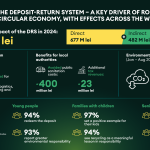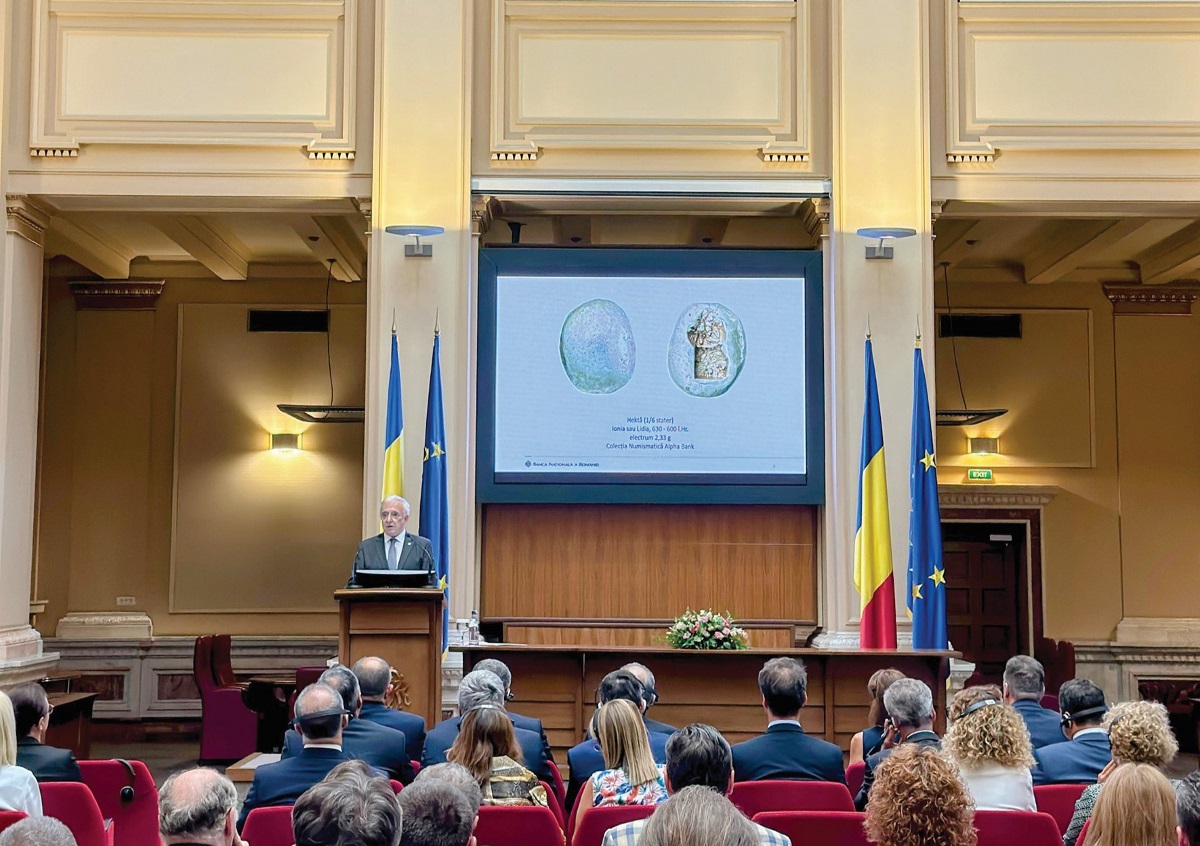
Small figures fight hard with big figures
Foto: Gajus-Images / depositphotos.com
It is rare for the International Monetary Fund (IMF) to revise its economic growth forecasts just one quarter into the year. Analysing the economic growth trends of its 190 member countries, the IMF revised its forecast for 86% of them and lowered its global economic growth projection for this year by almost one percentage point, from 4.4% to 3.6%. Moreover, this correction in the growth of the global economy is accompanied by a significant increase in the inflation forecast, which worries many economic analysts. Economist Mohamed El-Erian points out that “all this bad news is packaged in a wrapping of deeper uncertainty”, with the IMF’s revised economic outlook “worrying” because it “shows that inequality is expected to worsen both within and across countries”.
Romania is among the countries for which the IMF has revised down its economic growth forecast. The Fund’s correction puts Romanian economic growth at half of the autumn estimate, from 4.8% to just 2.2%. The forecast is extremely worrying, if we take into account that the budget for the current year has been built by the government assuming an economic growth of 4.6%. The data announced by the IMF should come as no surprise, as the World Bank also announced in early April that the Romanian economy would grow at a modest 1.9% this year, facing additional risks stemming from the war in Ukraine. And the European Commission (the most optimistic external donor) also saw a slowdown in Romania’s economy before the outbreak of war in Ukraine.
It dampens the economy, but accelerates inflation, and it is a shove in the slope of poverty given to a significant part of the population. The National Institute of Statistics has announced what the Romanian’s pocket already knew: inflation is biting hard into incomes and considerably decreasing purchasing power. In March, just a month after the NBR forecast a price increase of over 11% by mid-year, the inflation rate had already jumped to 10% (10.15%) from 8.53% a month earlier. Food products have the highest rate of increase (11.20%), followed by non-food products (10.86%) and services (6.53%). We are experiencing the highest inflation in 20 years (18 years ago was the last time inflation was measured in double digits). According to the National Institute of Statistics, natural gas, fuel, potatoes and oil take the biggest bite out of people’s incomes, while electricity has undergone a slight price correction through the compensation schemes imposed by the government; but after these schemes expire, electricity will “drain” people’s pockets again.
Inflation remains the biggest economic threat to ordinary people. Officially, the economy is expected to show some modest growth, but the risk of recession following the crisis in Ukraine is considerable. The COVID-19 pandemic has exposed the vulnerabilities of Romania’s economy: the impact of twin deficits, institutional policies and constraints, fiscal incoherence, labour market rigidities, persistent poverty and disparities in economic opportunities between regions and between urban and rural areas. On top of these came the global supply chain bottleneck and the impact of the war in Ukraine: food and energy prices were the first to “blow up”.
Depleted real purchasing power and declining remittances have caused a heavy burden, especially for Romania’s poor and marginalised population. The World Bank estimates that, despite hopes of an economic recovery, the share of the Romanian population living on less than $5.5 a day exceeds 10%. Rising food and energy prices have considerably reduced the real purchasing power of households, especially among the 10%+ poor and vulnerable citizens, who are forced to spend almost 65% of their budget on these necessities. And war in Ukraine and further disruption of the global supply chain will continue to affect Romania’s economy.
And a prolonged war in Ukraine may deepen the poverty level of the population and push Romania into a significant economic crisis: one in which small figures have to struggle to cope with the large ones. Economic growth, purchasing power, population income, level of development: small figures. Increasing poverty, unemployment, budget deficit, trade deficit, prices: big figures. And small figures are forced to carry the growing burden of big figures.
With the war in Ukraine – but also because of it – the global war on big figures eroding purchasing power and pushing people into poverty is in full swing. Despite hopes that the big figures would be reflected in economic and living standards growth rates, the big figures have done nothing but fall back on price alignment. Revenues measured in small figures are now struggling with prices expressed in increasingly larger figures. Inflation will be high for much longer than originally estimated.
International Monetary Fund experts recently revealed that for 2022, inflation is estimated at 5.7 percent in advanced economies and 8.7 percent in emerging and developing economies – 1.8 and 2.8 percentage points higher than estimated in January. The economy’s recovery is held back by significant threats from energy and food, and the war in Ukraine throws it into a sea of uncertainty.
Uncertainty is increasingly governing World Bank and International Monetary Fund forecasts as well, although they expect a gradual resolution of supply-demand imbalances and a modest increase in job supply at the baseline, “which should take some of the pressure off the alarming rise in prices”. But conditions could deteriorate significantly, the IMF says in its latest report.
Worsening imbalances between supply and demand – including those resulting from war – and further increases in commodities prices could lead to persistently high inflation and drastic changes in inflationary expectations. And signs of higher inflation in the longer term will push banks – by raising interest rates – to make money even more expensive, harder to get and harder to repay.
The impact of the small figures versus big figures war varies from country to country, depending on their economic strength and exposure to the war in Ukraine; we face a difficult trade-off between protecting economic growth (small figures) and limiting inflation (big figures).
Daniel Apostol
Share
Share















